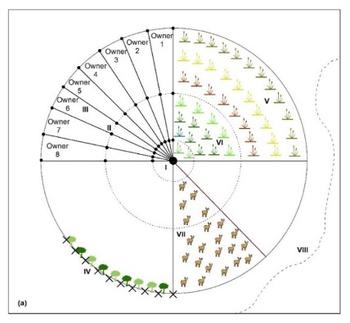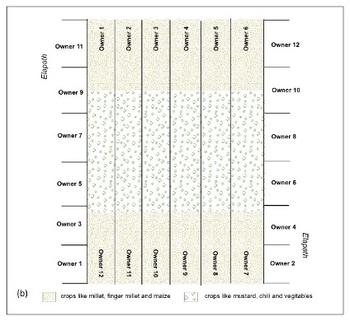Chena cultivation as traditional slash and burn practice
Wheel chena (mulketa hen)
After selecting suitable forestland the farmers divide the land into a cartwheel shape using a permanent landmark (mulketaya) in the centre, usually a tree. Each portion is allocated to an individual farmer who participates in the chena cultivation. The farmers enclose the chena land using a strong fence (danduweta) created by bending and binding natural vegetation in the distal part of the mulketa hen; this measure especially aims to provide protection from wildlife. For each sector the farmer decides which crop will be planted based on traditional knowledge and experience. (Source: Abeywardana et al. 2019)

